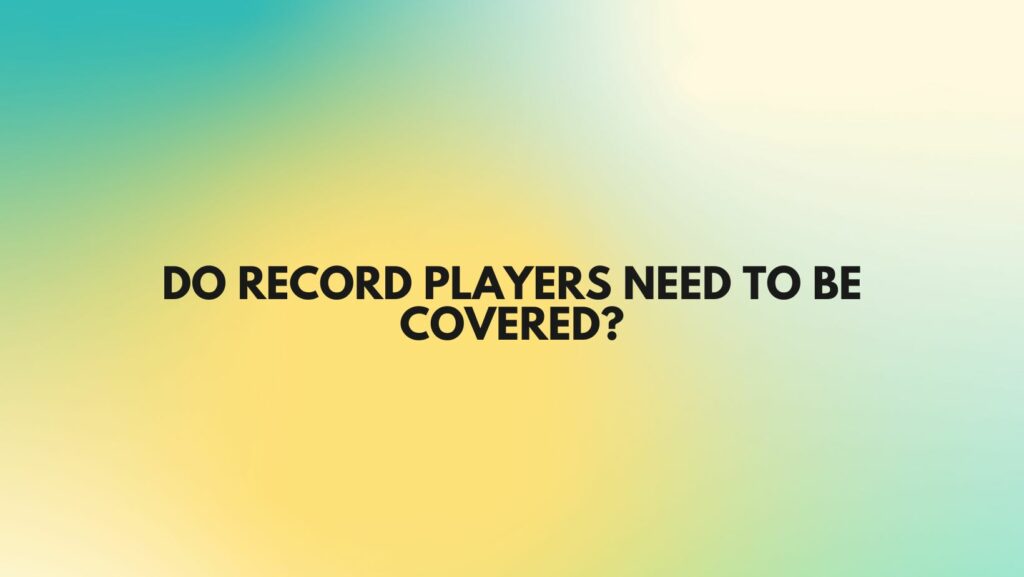Vinyl record players, cherished for their ability to deliver rich, analog sound, are prized possessions among music enthusiasts. As guardians of these beloved devices, the question arises: Do record players need to be covered? In this article, we’ll delve into the considerations, benefits, and potential drawbacks of covering record players, offering insights to help you make informed decisions about caring for your vinyl playback equipment.
The Importance of Protection:
- Shielding from Dust and Debris:
- Dust and debris pose a significant risk to record players, potentially affecting playback performance and damaging delicate components.
- Covering your record player helps shield it from airborne particles, reducing the likelihood of dust settling on the turntable, tonearm, and stylus.
- Preventing Accidental Damage:
- Record players are susceptible to accidental bumps, spills, and scratches, particularly in high-traffic areas or households with children or pets.
- A cover provides a protective barrier, reducing the risk of accidental damage and preserving the integrity of the record player’s components.
- Minimizing Exposure to Environmental Factors:
- Exposure to sunlight, moisture, and fluctuations in temperature and humidity can adversely affect record players over time.
- A cover helps minimize exposure to environmental factors, prolonging the lifespan of the equipment and ensuring consistent performance.
Benefits of Covering Record Players:
- Preservation of Aesthetic Appeal:
- A well-designed cover enhances the visual appeal of the record player setup, adding a touch of elegance and sophistication to the listening area.
- Customized covers or dust jackets can complement the decor and style of the room, elevating the overall aesthetic of the space.
- Ease of Maintenance:
- Covering the record player simplifies maintenance and cleaning routines, as it reduces the frequency of dusting and protects against spills and stains.
- Regular use of a cover helps keep the record player looking pristine and ensures that it’s always ready for enjoyable vinyl playback sessions.
Drawbacks and Considerations:
- Accessibility and Convenience:
- While covering the record player offers protection, it may also hinder accessibility and convenience, particularly if you frequently use or adjust the equipment.
- Choose a cover design that allows for easy removal and access to the record player’s controls, tonearm, and platter.
- Air Circulation and Ventilation:
- Ensure that the cover allows sufficient air circulation and ventilation to prevent moisture buildup and condensation, which can lead to mold or mildew growth.
- Avoid covers that trap heat or restrict airflow, as they may create unfavorable conditions for the record player’s components.
Conclusion: In conclusion, while covering record players is not strictly necessary, it offers valuable protection against dust, debris, and accidental damage. By investing in a well-designed cover and practicing proper maintenance and care, you can safeguard your precious vinyl playback equipment and prolong its lifespan. Consider the accessibility, ventilation, and aesthetic considerations when selecting a cover for your record player, ensuring that it strikes the perfect balance between protection and functionality. Ultimately, a cover serves as a thoughtful safeguard for your cherished record player, preserving its beauty and performance for years of enjoyable vinyl listening experiences.


